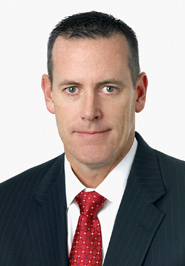Keep it simple: That is the mantra at Barclays Capital as it emerges from a year-long revamping of its electronic trading products and desk. And with this new simplicity, the bank hopes to increase profits and raise its profile in the challenging equities trading business.

Barclays is employing a three-pronged strategy to achieve its goal of moving up from the middle of the pack and into the top echelon of broker-dealers, according to Bill Bell, head of electronic distribution Americas and Bill White, head of electronic trading. The strategy is to deploy its new smart order router globally, grow its dark pool Barclays LX and simplify its algorithmic offerings.
"We wanted to make our team global; take the solid U.S. experience that our clients were getting and make it universal," Bell said. "Simplicity is the key – we want to replicate the same sales strategy and product set across the globe."
"Simple is better. Consistency across the global regions is good," White said. To him, simplicity is what the buyside wants, whether in St. Louis or Hong Kong. Clients appreciate a coordinated and streamlined strategy, which he thinks is key. And when clients find success using the firm’s products, White thinks they’ll trade with Barclays more often.
Bell acknowledges the firm was a late entrant in the electronic revolution. But he thinks there is a window of opportunity for Barclays with its revamped offerings. Barclays gained a U.S. presence when it took over Lehman Brothers after the White Shoe brokerage firm collapsed amid the financial crisis in the fall of 2008.
Bell, a 15-year veteran, began at Lehman in 1993, and started his career as a sales trader on the OTC desk. He moved through the ranks serving stints on the Nasdaq and listed desks, covering long-onlys and hedge funds. In about 2001, he became a team leader and managed a team of cash, program and vol traders.
He told Traders Magazine that electronic products were something the trading desk was missing when he was promoted to his current position in 2010. He and the firm’s senior management wanted to take his experience from his 17-years in the high-touch cash business and implement a similar coverage model in electronic. He took on the origination sales team in 2008 and in 2010 was named head of Americas electronic distribution, incorporating the origination sales, sales trading and the broker-dealer teams. Bell knew the high-touch business and what his team lacked.
"When I looked at the desk back then, I knew that to be successful in electronic trading, we needed to build a complete coverage model that replicated the high-touch desk," Bell said. "The goal was to build a high-touch desk for a low-touch outcome."
To do this, Bell went right to the firm’s sales graduate training program, selected fresh talent and taught them the business from the ground up. He also added some senior industry professionals to round out the team. After the revamp in 2010, Bell needed electronic products to offer clients. As he puts it, "At that time, our product needed to evolve. In the past, sales had outpaced the product." Now the product offering has caught up, he said.
Enter White. A career trader, White started at the Chicago Board Options Exchange in the early 90s. There, he traded multiple options products on the floor and built his own electronic options trading platform. Armed with a trading background as well as a quantitative and IT-focused mind, he got busy.

"I’ve always been involved in the IT side of trading," White said. "The firm had traditionally managed the electronic business from a very aggressive sales standpoint and putting a trader in charge was unique. I know the trading side; I know HFT, I know how to execute in this market structure. I can debate algo logic and or router logic, not just because I am selling it, but rather because I am developing it day in day out."
White spends about 90 percent of his day focused on some aspect of IT and trading, he told Traders Magazine. After arriving one year ago, he said his first task was to build the firm’s smart order router-simply referred to as the SOR. This would be the centerpiece of the desk’s electronic offering.
The SOR, which is now completed and actively routing orders in the U.S. and Europe, is slated for introduction in Asia this year. White declined to divulge how the router works, but he said it is set up to be region specific. It is also dynamic, not static, in that it is making changes in routing decisions based on real-time data inputs. It ranks venues at the symbol level, based on historical and real-time fill data and then roues orders to both lit and dark venues simultaneously, based on probability of fill, not on rebate.
"Every share that comes through the firm now has multiple execution strategies associated to it," White said, "and we know the cost, the benefits and quality. We’ve gone from a static execution model to a sophisticated dynamic real-time model."
White also took aim at the firm’s algorithmic offerings. While not paring back on the 10 algos Barclays offers, he did go back and re-engineer each of them. Old standbys like volume and time weighted average price were also made more dynamic. It now offers more aggressive liquidity seekers like Hydra, which scans the lit and dark venues, and a reengineered implementation shortfall algo.
And the revamping of the algo suite is paying off. According to Tabb Group, an industry consultancy, Barclays algos are rising in terms of usage. In Tabb’s U.S. Equity Trading 2011/12 report, Barclays climbed to 10th place among the top algo providers with clients mentioning them 19 percent of the time. In the 2010 report, Barclays was ranked 13th and mentioned only 10 percent of the time.
"Simplicity is a selling point for me," White said. "Fifty different algos is only a confusing issue for clients."
Bell agrees, adding Barclay’s business is focused on providing the buyside with a short list of algos rather than dozens. The new algos along with the new SOR allows the firm to provide the buyside at any time the best execution venue for either "one or one million shares," he said.
"Every single share that passes throughout the firm has multiple execution strategies – we know the costs, secondary execution strategies, at a given point, best certainty of execution, the benefit of crossing internally or in another dark pool," White said.
With an upgraded SOR and algos, White and Bell have turned their focus to getting more trades done in the firm’s dark pool, Barclays LX. Crossing trades internally helps the clients save money and helps the firm collect on both sides of the trade, a win-win for the desk.
According to Rosenblatt Securities November report, the firm’s dark pool garners approximately 0.91 percent of consolidated volume, up 21.5 percent year-over-year. In contrast, Credit Suisse’s Crossfinder gets 1.9 percent of consolidated volume. White hopes to double the venue’s market share in the next year by using the SOR and algos.
"We’d like to cross more internally in the dark pool – that’s where we can control market costs the best," White said.
In the end, Bell and White know they have their work cut out for them, but they remain focused on keeping things simple and unified across the globe.
"We want to attack the market," White said. "I’m working in the weeds with IT to develop the product all the time. And that is were the battle is going to be won, in the weeds."




